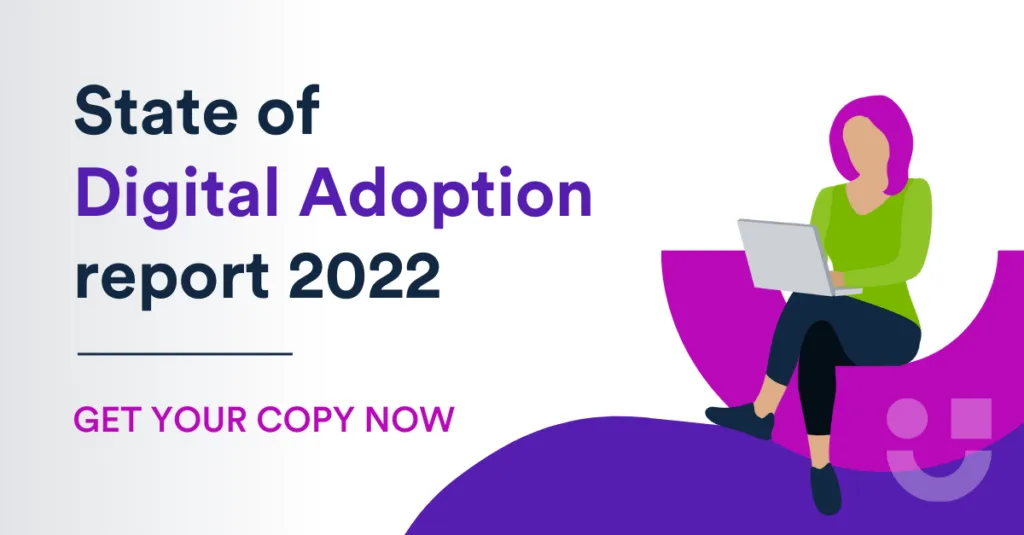How can digital adoption improve the Employee Experience?

Table of Contents
A happy employee is a productive employee.
But, how do you ensure the happiness of your employees? Well, this question is being asked in boardrooms the world over. There is no definitive answer, obviously, every employee will judge their workplace happiness on different factors.
For instance, some may put much more emphasis on the culture of a company, the benefits package, learning and development opportunities, or even the flexible working policies.
Yes, all of those factors can contribute to an employee’s satisfaction within a role. However, the day-to-day interaction with technology and software is often not considered.
Here at Userlane, we were curious about the connection between technology use and the Employee Experience, and conducted a large piece of research to deep-dive into this topic.
The results have been published in the State of Digital Adoption Report 2022, which you can download and read in full here:

The main findings from the report are as follows:
Business leaders and employees acknowledge that strong digital adoption is the key to a positive employee experience as tech use grows.
- Almost nine in ten decision makers and employees (88%) agree that digital adoption is key to both productivity and the employee experience.
- Seven in ten (72%) employees report that their use of software at work has increased over the past two years.
Software challenges frequently harm the employee experience, introducing frustration and costing time.
- Eighty-four percent of employees experience frustration or difficulty using software at work at least sometimes, and 40% feel frustrated “often” or “all the time.”
- More than one in three employees lose at least an hour each week to addressing software issues.
- Forty-four percent of employees simply postpone tasks due to frustration with software.
Poor digital adoption creates major business headaches for decision makers.
- Almost all (96%) of decision makers have experienced challenges with digital adoption, which has in turn, reduced the business value of software investments.
- The most common digital adoption challenges reported are employees failing to make full use of the software (34%), a digital skills gap amongst employees (30%), and the cost and resource implications of traditional software training (26%).
Most businesses are trying to improve digital adoption, with varying success.
- The vast majority of decision makers (96%) have adopted strategies to try to improve digital adoption.
- Despite these efforts, only a third (37%) rate their company’s digital adoption as “Excellent.”
- Decision makers report significant spend on software training – averaging £2,087 per employee per year.
We’ve discussed before how the Employee Experience is no longer just a buzzword, but a business imperative, and as explained by Ben Whitter, best-selling author of ‘Employee Experience’ and widely noted expert on HR:
“We need to question the foundations of why we are embedding a new technology or software, and whether it adds massive value to the employee experience. Employee experience is about the outcomes that people are delivering from their work and work life – is it about creating a seamless digital experience that enables them to deliver their very best performance and fulfill their potential.”
Businesses must see software adoption as a core part of the employee experience. If employees are frustrated or confused by the tools they use every day, they’re likely to look for another job. On the other hand, employees equipped with the right support and the best tools will have a positive experience and produce the best business outcomes.
A Digital Adoption Platform provides every application with a guidance layer that steers users and operators in real time while they accomplish digital tasks. A sort of GPS for your software, so users don’t get lost or run into issues.
Support is delivered directly on-screen while people interact with software applications in a self-serve consumable way. Guide users through tasks and offer relevant support at the time of need to guarantee employee productivity and a great employee experience.

